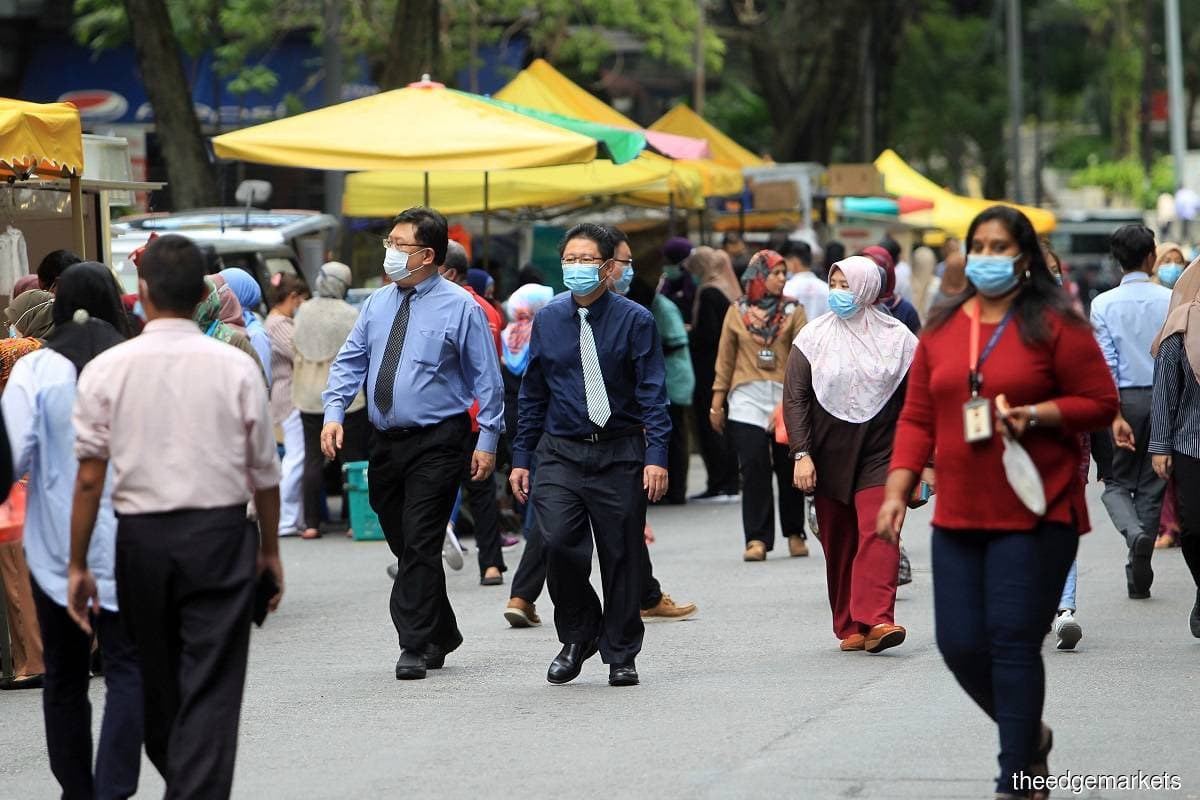
KUALA LUMPUR (Oct 29): Malaysia's household debt climbed further to RM1.34 trillion as at end-June 2021 from RM1.27 trillion a year ago.
Household debt to gross domestic product (GDP) ratio stood at 89.6%, which was lower against 93.2% in end-2020, due to recovery in economic growth during the first half of the year, according to the Ministry of Finance (MoF) in its Economic Outlook 2022 report. However, it was higher against 87.5% as at end-June 2020.
The total loans outstanding expanded by 3.1% to RM1.86 trillion while total household financial assets grew to RM2.9 trillion, as at end-June 2021.
Malaysian households are seen to lever up for wealth accumulation in 2021 as 57.3% of loans have been used to purchase residential property, followed by 6% for purchases of non-residential properties and 5.3% for investments in securities, according to the report.
"The resilience of the overall household sector remains supported by prudent median debt service ratios (DSR) and ample financial buffers. This is also reflected by lending, which continues to be underpinned by sound underwriting standards and loan affordability assessments by banks," said MoF.
Malaysian households borrow 41.6% more in 2021
Household borrowings expanded by 41.6% to RM126.9 billion while loan disbursements also rose by 10.5% to RM184.7 billion, primarily for consumption credits (11.4%), purchases of residential properties (5.5%) and passenger cars (2.7%).
The total outstanding household loans increased by 4.2% to RM1.09 trillion, accounting for 58.8% of the total outstanding loans in the banking sector, as at end-July 2021.
On the other hand, lending to business slowed down as sentiment turned cautious amid the resurgence in Covid-19 cases. Loan approvals to businesses declined by 3.1% to RM78.3 billion but loan disbursements to businesses improved by 21.6% to RM524.3 billion, representing 65.3% of total loans disbursed.
The manufacturing sector (23.4%) received the bulk of the total loans disbursed, followed by wholesale and retail trade, restaurants and hotels sector (18.8%) and finance, insurance and business activities sector (7.2%).
Outstanding loans in the business sector grew by 1.3% to RM642.2 billion, accounting for 34.5% of total loans outstanding.
MoF said that lending activities had improved as the relaxation of more economic sectors and speed-up of vaccination rates.
Loan approvals and disbursements went up by 16.1% and 22.3% to RM215.4 billion and RM803.4 billion respectively as at end-July 2021.
Enough buffer for banks to absorb losses
On the banking sector's performance, MoF said that the capacity for the sector to absorb losses remained strong and was well capitalised to withstand potential risks and provide credit in the economy. The ministry added that this was possible due to support from its healthy capital and liquidity levels coupled with resilient asset quality and prudent loss reserves.
As at end-July 2021, the excess total capital buffer of the sector remained stable at RM129.2 billion. Its capital ratios with Common Equity Tier 1 Capital, Tier 1 Capital and Total Capital Ratio remained at healthy levels of 14.7%, 15.2% and 18.5% when compared to the Basel III minimum regulatory levels of 4.5%, 6% and 8% of risk-weighted assets respectively.
Meanwhile, the loan quality and liquidity of the banking sector remained stable as net impairment loan ratio and loan loss coverage ratio (including regulatory reserves) stood at 1.03% and 128% respectively.
The Liquidity Coverage Ratio also stood at 152%, well above the 100% minimum requirement.
"Notwithstanding the adverse effects of the pandemic on the economy, Malaysia's banking system remained resilient, backed by prudent underwriting, ample liquidity and deposit driven funding," said MoF.
For more stories on the Economic Report 2021/2022, click here.